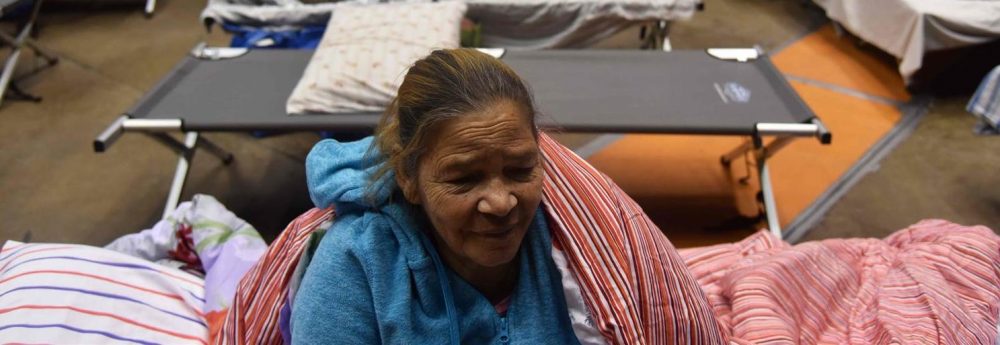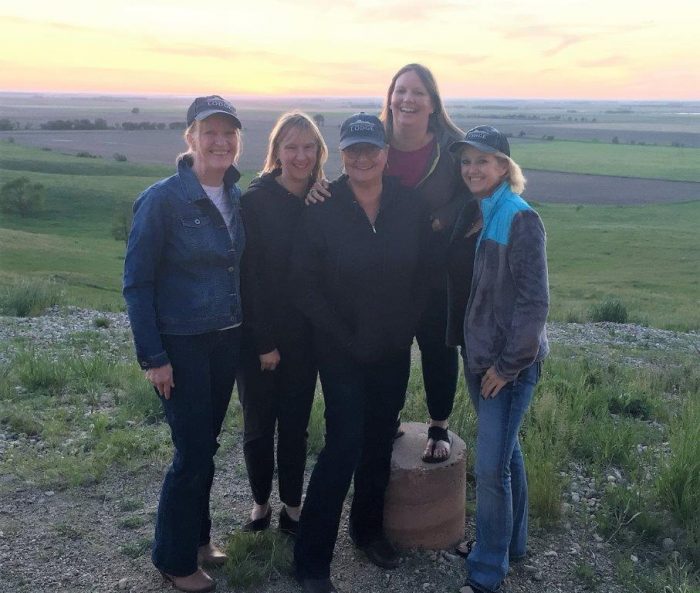A reminder to pause and think about long-term recovery in tornado-hit communities
If you are reading this missive, you are likely searching for a way to respond to the tornado outbreak that devastated communities in at least six states. With that in mind, I will ask you to do something that might sound surprising: Please do not do anything yet. Instead, let’s PAUSE for a moment. The […]

If you are reading this missive, you are likely searching for a way to respond to the tornado outbreak that devastated communities in at least six states. With that in mind, I will ask you to do something that might sound surprising: Please do not do anything yet. Instead, let’s PAUSE for a moment.
The storms that struck six states on Friday and Saturday night became personal for me. Somewhere around 3:20 a.m. CST, the tornado sirens began to wail, and the alerts on my family’s phones began to blare. What had been a tornado watch for several hours had now turned into a tornado warning. The city of Nashville, my hometown, was now wide awake.
We knew that tornadic activity was likely – having been alerted by the city’s office of emergency management and by local disaster-serving organizations. As Lori Shinton, CEO of Hands On Nashville (a CDP grantee partner) and chair of the Nashville Voluntary Organizations Active in Disasters (VOAD), said to me via email, “From my own personal history, 70-degree weather in the winter is really never a good thing in Tennessee.” After 15 years of living in Middle Tennessee, I heartily agree with her.
As the sirens sounded, my husband and I leaped out of bed, grabbed our girls and the dog, and headed to the basement. With fully charged phones in hand, we spent the first minutes staring at the Doppler, which showed our area in dark orange, meaning that the threat of damaging winds or tornadoes was a real possibility.
Thankfully, we received the “all clear” from the National Weather Service (NWS), indicating that the storm had passed. My family and I trudged back upstairs and crashed into our beds, unaware of the enormous devastation around us.
I learned yesterday that the NWS issued more than 100 tornado warnings. As detailed in our December 2021 tornadoes disaster profile:
Although NWS is still verifying exact numbers, locations and strengths, it is likely the single, deadliest tornado outbreak in December in U.S. history. Additionally, the current death toll of more than 70 people makes 2021 the deadliest year on record for tornadoes since 2011. Weather and government officials estimate at least one EF-5 and several EF-4s, which are rare for the time of year.
One tornado – dubbed the Quad-State Tornado – was reportedly on the ground for approximately 230 miles (200 miles in Kentucky alone) and touched at least four states: Arkansas, Missouri, Tennessee and Kentucky. The debris field was recorded above 30,000 feet (the height commercial planes fly) across much of its path. It may become the longest tornado in American history, replacing 1925’s Tri-State tornado, which logged in at 219 miles.
Returning now to my ask of you to PAUSE.
At the Center for Disaster Philanthropy (CDP), we know that 80% of all philanthropic giving ceases within the first two months following an event. And, we know that upwards of 55% of philanthropic giving is directed toward relief and response (our annual Measuring the State of Disaster Philanthropy report outlines these figures further).
We know that the needs of those affected by the tornadoes are so front and center, our hearts, minds and wallets tend to go immediately to response. I implore you, however, to also focus on supporting tornado-affected communities’ recovery.
So what does PAUSE mean? And what does focusing on recovery mean? Here are some examples:
- Learn what the community wants/needs. Support a disaster-affected community in a manner that meets the needs that they identify. Let them tell you what is essential.
- Take the long view. Power loss, transportation outages and twister-damaged homes may be top of mind, but it takes time to truly understand the disaster’s impact on people’s lives. Recovery will take a long time, and flexible funding will be needed throughout.
- Recognize there are places private philanthropy can help that government agencies might not. Governments cannot fully fund recovery. Therefore, private funders can develop solutions to help with recovery efforts and prevent or mitigate future disasters that the government cannot execute.
- Support existing grantee partners in the region. Build upon relationships that are already forged. Support those grantee partners with as unfettered funding as you possibly can, with as minimal reporting requirements necessary. Give freedom to your existing partners.
- Look to community foundations for partnership. Community foundations have deep ties in their community: They know who is in the community, what they’re doing and where the need is. They have insights into NGOs best suited to support recovery efforts in a particular community.
- Ask the experts. If you are considering supporting an organization that is positioned to work in an affected area, do some research. CDP and National Volunteer Organizations Active in Disasters have lists of organizations working in affected communities.
As you continue to investigate where to support the tornado outbreak recovery financially, I invite you to join our webinar “December 2021 tornadoes: How to support long-term recovery” this Thursday, Dec. 16, at 2 p.m. EST. The webinar will help grantmakers and donors understand the impact of these tornadoes and how best to support survivors’ full disaster recovery.
Pausing to understand where recovery needs will surface across tornado-stricken states is the best course of action to support the people and their communities. It will take time for those needs to emerge and private philanthropy will be critical to filling those needs over the long haul.
More like this

Where will we go from here?


